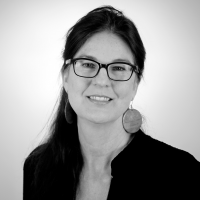US Department of State and Embassy of the United States in Berlin Support Transatlantic Knowledge-transfer for Climate Adaptation
- Event
- Date
-
- Location
- Timmendorfer Strand, Germany
On 19 September 2012 the RADOST Project, together with Mayor Hatice Kara, hosted the event "Transfer of the best local experiences to adapt to climate change: The Timmendorf Beach in dialogue with communities on the East Coast of the USA." The event focused on coastal protection and adaption measures for communities affected by climate change. The event allowed Timmendorf citizens to recall success factors and exchange views on the possibilities of further development of their exceptional coastal protection as well as the transferability of these measures to other communities. The workshop presentations are available for download.
In addition, Timmendorf citizens also discussed new activities they could engage in to further strengthen the area’s adaption to climate change.
Presentation and Moderation
In her opening speech, Mayor Hatice Kara emphasized that the interests of the community and the RADOST-Project are vast and forward-looking. Some concepts include creating artificial reefs to reduce beach erosion, developing prototypes of sustainable aquaculture, as well as using the changing ocean temperatures to heat or cool neighboring homes. Mayor Kara noted that despite the successful implementation of coastal protection project, the community wants to discover other possible measures for the long-term preservation and expansion of the Timmendorf Beach.
The event was presented by Timmendorf citizen and member of the Timmendorf Beach Rotary Club, Dr. Herbert Thiele, who also introduced subsequent lectures and moderated the discussion. Dr. Thiele emphasized the role of the Timmendorf Beach community to be "an ambassador of good will and knowledge exchange" for other communities facing similar circumstances.
During her presentation [pdf, 1.3 MB, German], Dr. Grit Martinez explained that the perception and evaluation of different adaption strategies to climate change also depends on the cultural context, which affects the identified risks and expected changes of the community. In addition to scientific, political and economic considerations, 'Good Governance' requires that socio-cultural factors are also taken into account. Dr. Martinez stated that local knowledge influences the choice and implementation of adaption measures, which must align with the social and personal values of the community in order to be accepted.
On behalf of the coastal protection authority – the Ministry for the Energy Transition, Agriculture, Environment and Rural Areas of Schleswig Holstein – Dr. Jacobus Hofstede also stressed in his presentation [pdf, 2.9 MB, German] that the participation process of the country and community jointly support coastal protection. Dr. Hofstede emphasized that early involvement by the local people allows for different courses of action to be played out, and thus the consequences can be better assessed by the citizens.
Dr. Christoph Lehners [pdf, 4.2 MB, German], who worked for the lead engineering firm on the Timmendorf coastal protection project, explained that one unique characteristic was the fusion of touristic demands and protection needs. By integrating bicycle paths, restaurants with an ocean view and beach chairs with a dyke system, the project is able to realize multiple co-benefits while serving as a protective structure.
Jeff Allenby [pdf, 2.5 MB, English], Chesapeake Bay coastal planner and member of the NGO Chesapeake Conservancy, participated in the event via video conference. Although the US government’s reaction to climate change is limited, Mr. Allenby explained that Maryland is a progressive state actively engaged in climate change adaption activities and ready to fund additional measures with local grants. These measures are indeed necessary. By 2100, the sea level is expected to rise one meter in the Chesapeake Bay. Therefore, the approach of the Timmendorf is of considerable interest among planners and communities in the (smaller, yet geo-morphologically similar) Chesapeake Bay.
In the final discussion, Dr. Grit Martinez led an open dialogue with the public. The audience stressed that the dynamic and increasingly complex policy field and local adaption to climate change still have much to learn from one another. Therefore, providing a platform to aid the transfer and exchange of sound approaches between local stakeholders is essential to enhancing coastal protection and adaptation measures.
Outcome
The aim of RADOST is to help transfer ideas from the successful and integrated coastal protection project at Timmendorf Beach to other coast regions of the Baltic Sea and international partner regions of the project, such as the Chesapeake Bay. In addition to the support from RADOST, the community representatives from Timmendorf will gladly serve as mentors. In spring 2013, more face-to-face "workshop discussions" between the coastal planners and the community representatives from Chesapeake Bay and Timmendorf Beach were already planned. The learning and exchange of these future events is made possible by funding from the US Department of State in cooperation with the US Embassy in Berlin.



